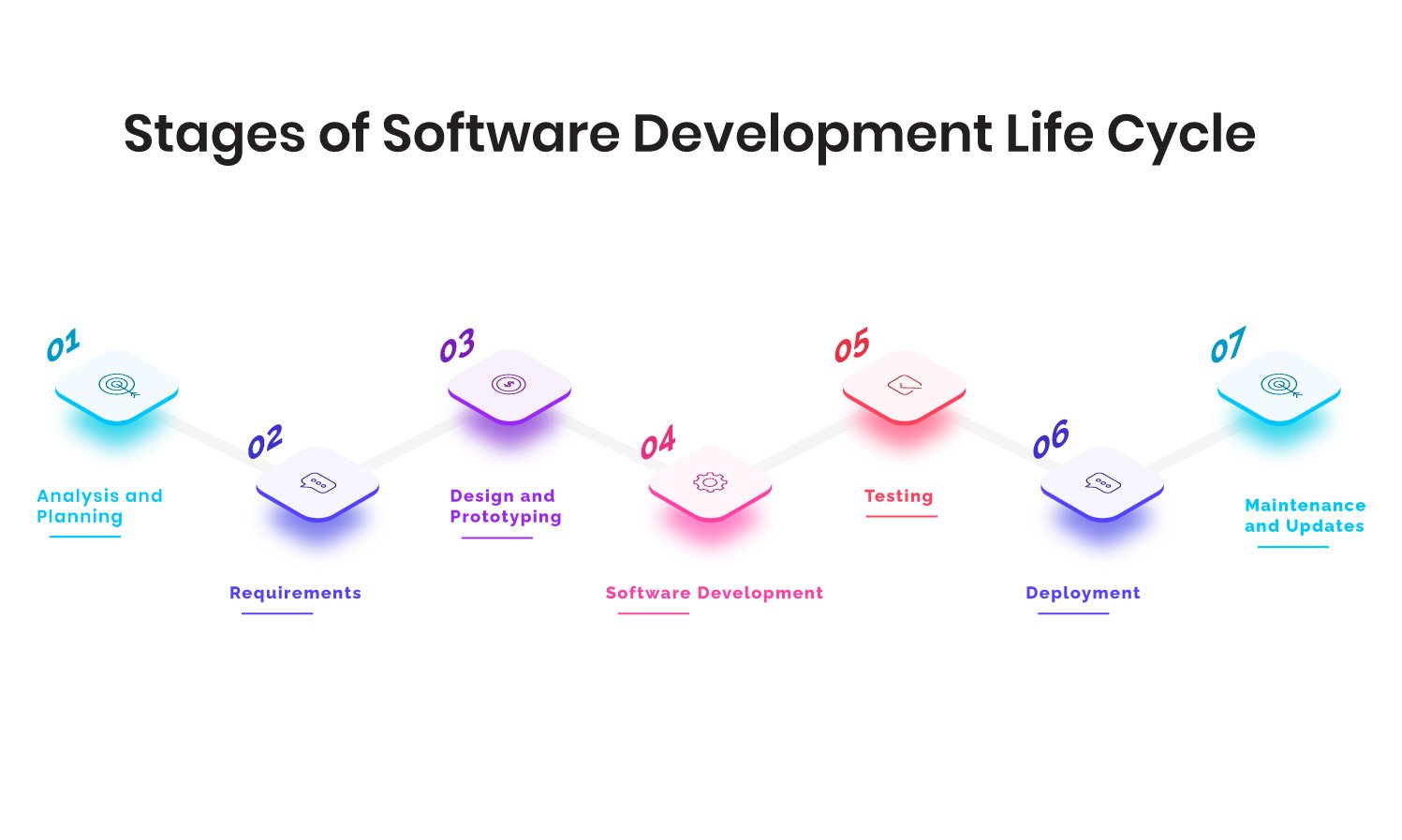
Building functional and well-optimized software requires going through all the standard stages of the software development process. Skipping any of these stages could lead to technical debt and over adverse side effects that will likely result in a higher software development cost. Yes, different software projects may have different development processes, but there are some standard stages that every project needs to follow to be successful.
This article will discuss the seven essential stages of the software development life cycle (SDLC) that every developer, project manager, or systems analyst should know before working on any project. But before discussing these stages, let me first explain what SDLC means.
What is SDLC?
Software Development Life Cycle (SDLC) refers to the processes that lead to the highest quality software in the shortest possible time and at the lowest cost. So, following all the stages to the dot will boost your efficiency in working on software development projects without compromising the quality of the final output and saving a lot on software development cost.
Stages of SDLC
Analysis and Planning
Before you write any line of code, you need to take time and do proper planning and analysis for the project. The planning and analysis stage involves defining the scope of the project, its feasibility, the problem that the project intends to solve, researching similar projects, and developing an activity plan for the project.
Getting the analysis and planning stage right will save you a lot of time down the road. This stage will give your project the proper direction it needs to take at every step. It is crucial to involve all the relevant stakeholders of the project during this stage because their input will impact the project execution.
Requirements
After creating a proper plan for your project, the next stage is determining the project’s requirements. At this stage, you have to look at the problem the project intends to solve and develop the conditions that will make it possible to solve it. At this stage, you have to determine the third-party applications and APIs to integrate with your software application.
For example, if you build an application that involves receiving payments, you need to create a list of payment platforms that will integrate with your system. The languages, frameworks, and other software development tools used in the project are also determined. It is also at this stage you write the software requirements specifications document.
Design and Prototyping
Before building the actual product, developers and product designers need to sit down and formulate a design and prototype of the intended system. The design has to illustrate the user interface of the project clearly. It also has to elaborate on how the UI will interact with the back-end to make it work.
The main goal of this stage is to turn the software requirements specifications (SRS) into a logical structure that developers can use to start coding the system. The design document that developers will follow is also created at this stage.
Software Development
The development stage is where developers write the actual code to build the application following the design document created earlier. Development involves forming the front-end (User interface) and the application’s back-end (server-side system functionality). Depending on how big your project is and your resources, you can have separate teams, one for the front-end and another for the back-end.
Developers can follow any coding guidelines as defined by your organization. If the earlier stages were executed correctly, the development stage would always be smoother for your team. However, there are specific challenges that you may not anticipate while planning for the project. In such scenarios, an appropriate solution has to be agreed upon, which might even require some changes in the project’s initial design.
Testing
After building software, you need to test that each written piece fulfills its intended function. During this stage, engineers go through the code to check for any bugs or defects. For more significant projects, this stage is usually handled by a quality assurance team that works closely with the developers to ensure the final product meets the quality standards defined in the SRS document.
Deployment
After confirming that the final product meets the minimum requirements, the next stage is deploying the system on the servers for end-users to start using it. Early access is provided to a few beta testers who use the product and give the developers feedback about the bugs and the system’s overall functionality.
When most of the issues raised during the beta testing stage are fixed, the product can finally be availed to all users.
Maintenance and Updates
While end-users are using the software, developers must continuously fix all the issues raised to ensure the software serves its primary purpose. New features and updates have to be added to the software to boost its functionality. As technology continues to advance, your system will require these updates if you want it to stay relevant to your end-users for a couple of years to come.
Conclusion
The seven stages we have just discussed are the most important ones and apply to almost every software development process and project. It should also be noted that these stages will likely be recurring throughout the product lifecycle. For instance, if you are to make a major update to the system, you will have to go through the planning, requirements, design, development, testing, and deployment stages once again.
About Author:
Naveen Joshi is the CMO at Taazaa, a software development company based in Ohio. His pursuance of getting things executed in the best way possible has taught him to distinguish theory from practice. He spends most of his time reading, researching, and writing on technology insights and trends.
Interesting Related Article: “Software Development Trends That Will Soon Dominate“

